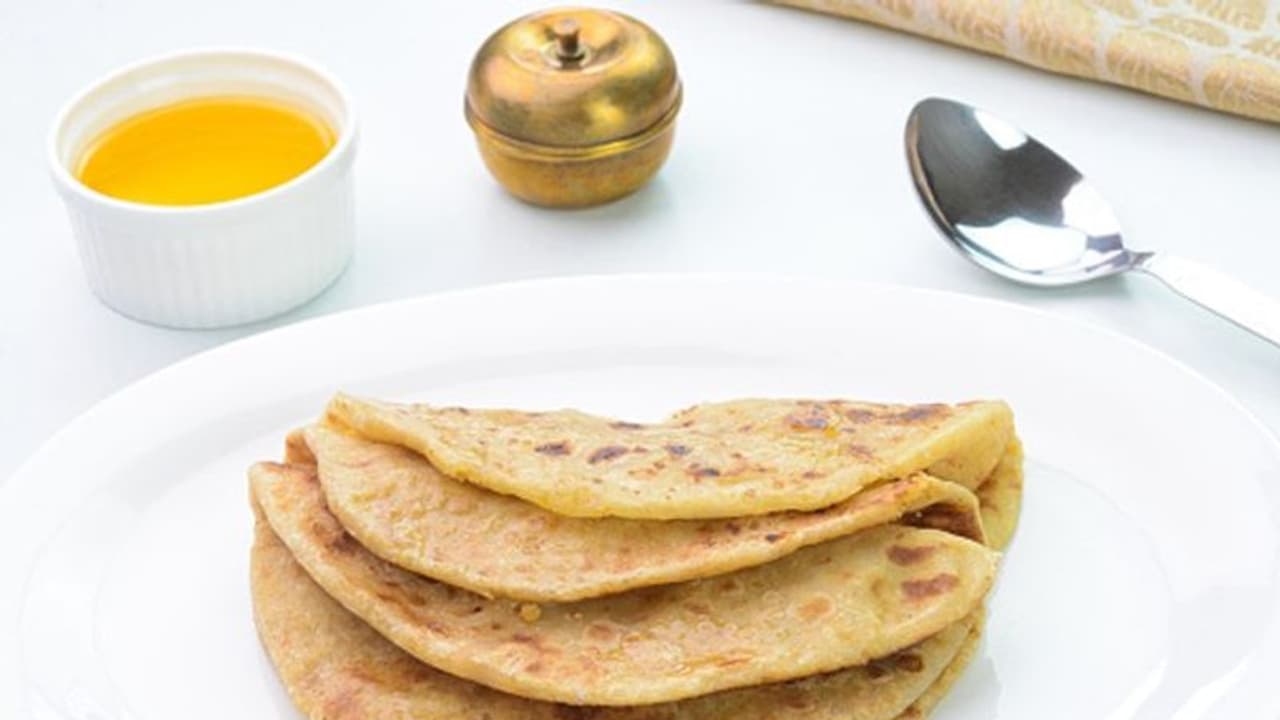While puran poli traditionally incorporates chana dal (split Bengal gram), the South Indian version, obbattu, often utilizes tuvar dal (split pigeon pea) due to its widespread availability and familiar taste. Additionally, in some regions, obbattu incorporates coconut and a pinch of salt to enhance its flavors.
With Ganesh Chaturthi right around the corner, preparations are in full swing as people across India get ready to celebrate this beloved festival with great enthusiasm. While the sight of grand pandals being erected in various parts of cities is common, households are also bustling with activity as they spruce up their spaces to welcome the beloved deity.

Among the many tasks occupying their minds and kitchens is the preparation of delicious treats to offer to Lord Ganesha. Food is an integral part of Ganeshotsav, and devotees prepare a delightful array of sweet and savory dishes. One such classic offering is the revered "puran poli," a sweet bread popular in Maharashtra and prepared widely during this festive period. This Ganesh Chaturthi, why not explore a different variation of puran poli that offers an equally delightful taste?
Let's introduce you to the South Indian version of puran poli, known as "obbattu." Also referred to as "Bobbatlu" or "Holige," this dish holds its own special place in the culinary traditions of Andhra Pradesh, Karnataka, and Tamil Nadu. Let's delve into the details.
Obbattu vs. Puran Poli: Is There a Difference?
At first glance, both uran poli and obbattu may appear quite similar. However, upon closer inspection, you'll find some fundamental differences in the ingredients used. According to food experts, one of the primary distinctions lies in the choice of lentils for the stuffing. While puran poli traditionally incorporates chana dal (split Bengal gram), the South Indian version, obbattu, often utilizes tuvar dal (split pigeon pea) due to its widespread availability and familiar taste. Additionally, in some regions, obbattu incorporates coconut and a pinch of salt to enhance its flavors.
How to make obbattu?
Ingredients:
For the Outer Dough:
- 1 cup of Maida (All-Purpose Flour) or wheat flour
- A pinch of salt
- Water (as needed)
For the Sweet Filling:
- 1 cup of Tuvar Dal
- 1 cup of Jaggery (grated)
- 1/2 tsp of Cardamom Powder
- A pinch of Nutmeg Powder
- A pinch of Salt
For Making Obbattu:
- Ghee (clarified butter)
- Dry flour (for dusting)
Instructions:
Making the Sweet Filling (Puran):
- Wash the tuvar dal thoroughly and pressure cook it with enough water until it's soft and cooked.
- Drain any excess water and mash the cooked tuvar dal.
- In a pan, heat the grated jaggery on low heat until it melts and forms a syrup.
- Add the mashed tuvar dal to the jaggery syrup and mix well.
- Continue to cook the mixture, stirring constantly until it thickens and leaves the sides of the pan.
- Add cardamom powder, nutmeg powder, and a pinch of salt for flavor. Mix well.
- Allow the filling to cool completely. Once cooled, make small balls of the filling and set them aside.
Making the Outer Dough:
- In a mixing bowl, add the all-purpose flour (maida) and a pinch of salt.
- Gradually add water and knead the dough until it's smooth and elastic. The dough should be soft but not sticky.
- Cover the dough with a damp cloth and let it rest for at least 30 minutes.
Making Obbattu:
- Divide the dough into small, equal-sized balls.
- Take one dough ball and flatten it with your fingers to form a small disc.
- Place a sweet filling ball in the center of the disc and carefully encase it with the dough, ensuring there are no cracks.
- Flatten this stuffed ball gently between your palms.
- Dust it with dry flour and roll it out into a thin, round obbattu using a rolling pin. Be gentle to avoid the filling from spilling out.
- Heat a griddle (tava) on medium heat and place the obbattu on it.
- Cook both sides until golden brown, applying a little ghee on each side. Obbattu should be crisp and evenly cooked.
- Remove from heat and repeat the process for the remaining dough balls and sweet filling balls.
Your delicious Obbattu is ready to be served! This sweet flatbread can be enjoyed warm with a drizzle of ghee. It's a traditional and delightful treat that adds to the festivities of Ganesh Chaturthi. Offer it to Lord Ganesha and relish it with your family and friends.
